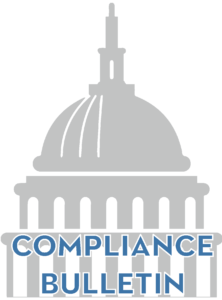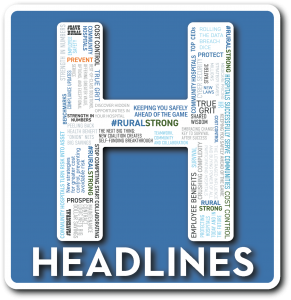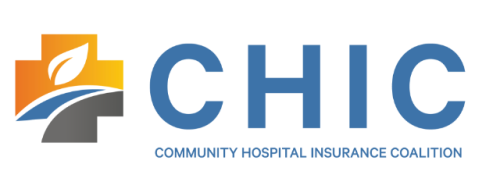The 3rd Annual True Grit Edition
Thirteen hospitals in Texas have closed since 2010, the most of any state.
Becker’s Hospital Review, December 16, 2016
Heroes may not be braver than anyone else. They’re just braver 5 minutes longer.
Ronald Reagan
There’s much more to the men and women who lead our rural hospitals than meets the eye. Inside, deeper down, they have grit, true grit, and they have it in spades.
In our feature article, we dig into how the everyday heroes at Eastland Memorial are living up to a simple promise: “People you know caring for people you love.” As you read on, we think you will see that, like the people who keep it, there is more to this promise than meets the eye.

Contents
Embracing change key to survival after success
Attend to Win: Wednesday, April 19 3 pm Searching for Hidden Opportunities in Your Hospital
Testing New Approaches: Why Rural-specific Demonstration Projects Are Needed
ACA Replacement Bill Withdrawn
Here we grow again! HealthSure welcomes Briana Carroll to the team
Embracing change key to survival after success
Most often, survival precedes success and success, once attained, means survival is no longer an issue. Not so when it comes to rural hospitals; success, no matter how great, does not guarantee survival.
No one knows this better than Ted Matthews, the CEO of Eastland Memorial Hospital, “We realize without change we’re going to become stagnant and once you become stagnant, you’re not going to survive in the health care industry.”
Ironically, the need to embrace change is even more critical due to something that never seems to change: the constant struggle to make financial ends meet. Ted explains, “It’s universal in rural healthcare; you’re doing well if you have a break-even margin. In our particular case, if we had to rely solely on revenue we receive for delivering patient care, it wouldn’t be nearly enough to offset expenses.”
Breaking even
“There’s a myriad of reasons, but primarily it’s our patient mix; we have a high percentage of Medicare and Medicaid patients and many times, what we are reimbursed does not cover what we spend treating those patients.”
Successfully delivering the care patients need and expect just doesn’t pay enough. This dilemma is “situation normal” for rural hospitals across the country, which forces leaders like Ted Matthews to do whatever they can to find alternative funding and be as frugal as possible when it comes to spending money.
Tapping alternative sources of funding takes a good deal of determination, extraordinary diligence, teamwork, and in many cases, a high tolerance for risk. Like many rural hospitals, Eastland Memorial has taken advantage of Medicaid Waiver programs, and the Nursing Home Upper Payment Limit (UPL) program (which morphed into the Minimum Payment Amounts Program – MPAP).
Juggling risk and reward
How Eastland Memorial capitalized on the alternative funding opportunities presented by the Medicaid Waiver program highlights the foresight, grit and determination needed to survive.
“We’ve been very successful with the 1115 Waiver by coming up with three projects that worked out really well,” Ted said. “One was the renovation of our OR. It allowed us to draw in additional Medicaid patients by offering procedures that previously were only available 100 miles away in the metropolitan area (Dallas – Fort Worth).”
“Physician recruitment is the second project we focused on because recruiting physicians to rural areas is just very challenging. And, the third was the patient-centered medical home model. We had to quickly learn how to go out into the community to address medical needs before they become critical and the patient ended up in our ER.”
Medicaid Waiver programs have been essential to Eastland Memorial ‘s survival for the uncompensated care it is constantly delivering. “It’s not uncommon to have a 22-24% uninsured rate in rural areas. It’s our mission to take care of people, so when those individuals come into our ER or hospital, that’s what we do,” Ted said.
Unlike some of the riskier decisions Ted and his board have made, doing the work and making the investments needed for realizing the Medicaid Waiver opportunity was something, “… that really didn’t take a lot of risk analysis. It was something we just needed to do.”
Rolling up our sleeves
“The real barrier was the amount of work involved. We had to set up a number of benchmarks and meet those benchmarks in order to draw down federal dollars. It was a five or six year program and the first few years, those benchmarks were easier to hit than they were in the latter years. We were audited many times to make sure all of our data was correct, which it was. But in the end, it has been a great program for us financially and more importantly, it allows us to offer services we normally would not have offered.”
These programs expire in December of this year and the future is uncertain as a replacement or extension has not been finalized. In the meantime, Ted and his team are keeping their fingers crossed. “I’ll tell you what, without these programs, we might not be dead in the water, but we would have on a life jacket and be bailing pretty fast.”
Taking advantage of the Nursing Home UPL program (which became MPAP) was a riskier proposition than the Medicaid Waiver programs. For Ted and the Eastland board, they had to assess the risk of putting up the hospital’s money in order to qualify for federal funds. The impact on cash flow was of greatest concern.
The details of how the program works will be familiar to most of our readers, but the long and short of it is a hospital agrees to be accountable for improving and maintaining the level of care seniors receive in nursing homes. Which means any nursing home within a 150-mile radius of the hospital can agree to let the hospital provide oversight. In exchange for meeting the standards of care set forth in the program, and by putting up it’s own money, the hospital qualifies for a reimbursement that is 30 – 40% more than the original amount initially put aside. The hospital then can recoup its investment and decide how to spend the extra amount.
How will we bridge the gap?
“When you look at nursing home care on a national basis, Texas performs very low. We are not very good at taking care of residents in nursing homes primarily because a lot of the residents are Medicaid recipients. Medicaid reimbursement for nursing homes can be anywhere from $13 to $15 per day. This reimbursement can be about $14 or $15 a day per bed less than what the care being delivered costs. It’s a huge need.”
Ted and the board were one of the earliest participants in the program and the results have been highly successful. “The program worked out really, really well in part because it was all tied to quality. We had to perform. We were in those nursing homes at least once a month or sometimes twice a month to make sure quality measures were being met. I had clinical people in them. I actually went to these nursing homes myself. We were able to draw down federal funds and not only improve resident care at the nursing homes, we were able to take a portion of that money and provide additional health services at our hospital… and it was all budget-neutral to the state. It worked out marvelously.”
Just when you would think the team at Eastland Memorial could relax and enjoy the success they had achieved, the government decided to end the program. It ceased being in effect as of August 2016.
A new program called Quality Incentive Payment Program (QIPP) will be in place as of September 1, 2017 but in the meantime, the hospital has been left with a risky choice between continuing meeting its nursing home obligations without compensation or dumping the whole thing and picking up the new program when it finally arrives.
The real meaning of true grit
True grit means that for Ted there is only one choice: “We’re still in those nursing homes every month and we have continued to focus on quality of care.”
True grit also means managing the gap in funding created by the ending of the MPAP program 12 months before the replacement QIPP comes on stream. Because of the timing of the reimbursements from MPAP, a six to seven month delay, Eastland Memorial received its last draw down in February. That means six months of no money from the government for maintaining care quality in nursing homes… not to mention the additional funds essential to meet the hospital’s operating deficit.
“The problem with QIPP is we will transfer our first dollars in May – it’s a substantial amount of money – and then we have to transfer again in November. But, we do not receive our first payment for the May transfer until November. Which means it could be 19 months until we reach a break-even point on this program.”
When your reserves are drained and you are uncertain about how well the replacement program will work for your hospital, the order of the day is cash flow management.“We have nursing homes relying on us so cash management is huge. We are sitting here juggling accounts, shutting off lights and turning down the thermostats. I mean, we were watching every penny until we got those funds back,” Ted said.
Even in the face of what could be seen as unbearable risk due to regulatory and financial uncertainty, Ted says he is sure the hospital will survive and continue to succeed because of his board and staff. “Without our staff and employees, everything we’ve done and hope to do would not be possible. This is a collective effort by everyone at the hospital as well as the board members. It’s the buy-in we receive from everyone that gives you the courage to go forward knowing there’s going to be some surprises… you just hope that they’re not too large.”
Success and survival?
For Ted, it’s a simple matter of, “performing or closing your hospital and that’s a pretty strong motivational drive. If we are not here, there’s going to be some really bad outcomes for people.”
Success has been achieved in the most meaningful manner at Eastland Memorial which currently enjoys a five-star ranking for patient satisfaction and four-star ranking for quality. “I want us to be absolutely the best rural hospital out there. We will become a five star on quality.”
But, success is one thing and survival quite another. The only thing the patients of every rural hospital can count on, come what may, is the true grit of people like Ted Matthews and his team at Eastland Memorial Hospital.
Attend to Win: Wednesday, April 19, 3 pm Searching for Hidden Opportunities in Your Hospital
Wednesday, April 19th at 3pm, Brant Couch President of HealthSure will be moderating, Searching for Hidden Opportunities in Your Hospital, at the TORCH Annual Conference in Dallas. As the world around us continues to evolve keeping things simple is essential.
Our panel of employee benefits experts will show you how your hospital can successfully meet these five fundamental challenges:
- Cost control
- Communication effectiveness
- Wellness that works
- Compliance certainty
- Administrative efficiency
Sound familiar? Yes indeed, these are the same challenges you have faced before. The order of priority may shift from year to year but these five are always on your plate. Our panel will take a closer look at each of them to help you find the hidden savings in your hospital.
- Ed Pudlowski Chief Consulting Officer, American Fidelity Administrative Services
- Dr. Jane Forester, Medical Director, Allied
- Kevin Seeker, AVP Benefits Communication Strategy, Sun Life Financial
We are looking forward to seeing you April 19th. Along with learning about these hidden opportunities, attendees will have the opportunity to win Yeti Tumblers.
Why Rural-specific Demonstration Projects Are Needed
The healthcare delivery system is undergoing dramatic change, with an emphasis on finding new approaches and organizational frameworks to:
- improve health outcomes,
- control costs, and
- improve population health
Financial incentives are changing from a focus on volume-based services to value-based services. There is a concurrent need to better measure and account for quality of care in all settings and improve transitions of care as patients move from one care setting to another.
Advances in technology and new approaches to organizing care delivery are occurring quickly, with examples like the patient-centered medical home, accountable care organizations, and patient-safety organizations.
Most early adopters of new care models have been large, urban-based integrated delivery systems. Less is known about how these changes and environmental factors will affect rural healthcare delivery systems. Because rural healthcare providers are often paid outside of the traditional prospective payment systems and fee schedules, there is less known about how new and emerging models might function in rural communities. As a result, policy makers and rural providers need to better understand the implications of new and emerging models for low-volume rural settings.

ACA Replacement Bill Withdrawn
On March 24, 2017, Republican leadership in the U.S. House of Representatives withdrew the American Health Care Act—their proposed legislation to repeal and replace the Affordable Care Act (ACA).
A House vote was scheduled to take place on that day, but House Republicans could not secure enough votes to approve the legislation and, instead, canceled the vote. As a result, the ACA will remain in place at this time.

IMPACT ON EMPLOYERS
Because the House was unable to pass the American Health Care Act, the ACA remains current law, and employers must continue to comply with all applicable ACA provisions.
President Donald Trump has indicated that he would not continue to pursue an ACA repeal if the American Health Care Act could not be passed. Both President Trump and House leadership have stated that they now intend to focus on other issues. Despite this, Congress may choose to pursue their own ACA repeal and replacement in the future.
Legislative Process
Two separate bills that make up the American Health Care Act were released in response to a budget resolution passed by Congress on Jan. 13, 2017. The budget resolution is a nonbinding spending blueprint that directs House and Senate Committees to create federal budget “reconciliation” legislation. To become law, budget reconciliation bills must go through the legislative process. However, a budget reconciliation bill is generally filibuster-proof, and can be passed by both houses with a simple majority vote.
A full repeal of the ACA cannot be accomplished through the budget reconciliation process. A budget reconciliation bill can only address ACA provisions that directly relate to budgetary issues—specifically, federal spending and taxation. A full repeal of the ACA must be introduced as a separate bill that would require 60 votes in the Senate to pass.
Debate on the American Health Care Act began on March 8, 2017. To address concerns raised by both Democrats and fellow Republicans, the House Republican leadership released amendments to the legislation on March 20, 2017, followed by a second set of amendments on March 23, 2017. The House vote was originally expected to take place on March 23, 2017, but was delayed for one day, until March 24, 2017.
Following the announcement that the House vote would be delayed, President Trump stated that he would not continue to pursue an ACA repeal if the House could not pass this legislation. As a result, the ACA will remain in place at this time. However, Congress may choose to pursue their own ACA repeal and replacement in the future.
ACA Provisions Not Impacted
The majority of the ACA would not have been affected by the new legislation. For example, the following key ACA provisions would remain in place:
- Cost-sharing limits on essential health benefits (EHBs) for non-grandfathered plans (currently $7,150 for self-only coverage and $14,300 for family coverage)
- Prohibition on lifetime and annual limits for EHBs
- Requirements to cover pre-existing conditions
- Coverage for adult children up to age 26
- Guaranteed availability and renewability of coverage
- Nondiscrimination rules (on the basis of race, nationality, disability, age or sex)
- Prohibition on health status underwriting
Age rating restrictions would also continue to apply, with the age ratio limit being revised to 5:1 (instead of 3:1), and states would be allowed to set their own limits.
Repealing the Employer and Individual Mandates
The ACA imposes both an employer and individual mandate. The American Health Care Act would have reduced the penalties imposed under these provisions to zero beginning in 2016, effectively repealing both mandates (although they would technically still exist).
However, beginning with open enrollment for 2019, the American Health Care Act would have allowed issuers to add a 30 percent late-enrollment surcharge to the premium cost for any applicants that had a lapse in coverage for greater than 63 days during the previous 12 months. The late-enrollment surcharge would then be discontinued after 12 months.
Replacing Health Insurance Subsidies with Tax Credits
The ACA currently offers federal subsidies in the form of premium tax credits and cost-sharing reductions to certain low-income individuals who purchase coverage through the Exchanges. The American Health Care Act would have repealed both of these subsidies, effective in 2020, and replace them with a portable, monthly tax credit for all individuals that could be used to purchase individual health insurance coverage.
The American Health Care Act would have also repealed the ACA’s small business tax credit beginning in 2020. In addition, under the Act, between 2018 and 2020, the small business tax credit generally would not be available with respect to a qualified health plan that provides coverage relating to elective abortions.
Enhancements to Health Savings Accounts (HSAs)
HSAs are tax-advantaged savings accounts tied to a high deductible health plan (HDHP), which can be used to pay for certain medical expenses. To incentivize use of HSAs, the American Health Care Act would have:
- Increased the maximum HSA contribution limit: The HSA contribution limit for 2017 is $3,400 for self-only coverage and $6,750 for family coverage. Beginning in 2018, the new law would have allowed HSA contributions up to the maximum out-of-pocket limits allowed by law (at least $6,550 for self-only coverage and $13,100 for family coverage).
- Allowed both spouses to make catch-up contributions to the same HSA: The new law would have allowed both spouses of a married couple to make catch-up contributions to one HSA, beginning in 2018, if both spouses are eligible for catch-up contributions and either has family coverage.
- Addressed expenses incurred prior to establishment of HSA: Starting in 2018, if an HSA is established within 60 days after an individual’s HDHP coverage begins, the HSA funds would have been able to be used to pay for expenses incurred starting on the date the HDHP coverage began.
Relief from ACA Tax Changes
The American Health Care Act would have provided relief from many of the ACA’s tax provisions. The amendments made to the Act would have accelerated this relief by one year for most provisions, moving the effective dates for repeal up to 2017. The affected tax provisions would have included the following:
- Cadillac tax: The ACA imposes a 40 percent excise tax on high cost employer-sponsored health coverage, effective in 2020. The new law would have changed the effective date of the tax, so that it would apply only for taxable periods beginning after Dec. 31, 2025.
- Restrictions on using HSAs for over-the-counter (OTC) medications: The ACA prohibits taxpayers from using certain tax-advantaged HSAs to help pay for OTC medications. The new law would have allowed these accounts to be used for OTC purchases, beginning in 2017.
- Increased tax on withdrawals from HSAs: Distributions from an HSA (or Archer MSA) that are not used for qualified medical expenses are includible in income and are generally subject to an additional tax. The ACA increased the tax rate on distributions that are not used for qualified medical expenses to 20 percent. The new law would have lowered the rate to pre-ACA percentages, effective for distributions after Dec. 31, 2016.
- Health flexible spending account (FSA) limit: The ACA limits the amount an individual may contribute to a health FSA to $2,500 (as adjusted each year). The new law would have repealed the limitation on health FSA contributions for taxable years beginning after Dec. 31, 2016.
- Additional Medicare tax: The ACA increased the Medicare tax rate for high-income individuals, requiring an additional 0.9 percent of wages, compensation and self-employment income over certain thresholds to be withheld. The new law would have repealed this additional Medicare tax beginning in 2023 (delayed from 2017 under the second set of amendments).
- Deduction limitation for Medicare Part D subsidy: The ACA eliminated the ability for employers receiving the retiree drug subsidy to take a tax deduction on the value of this subsidy. Effective in 2017, the new law would have repealed this ACA change, and reinstated the business-expense deduction for retiree prescription drug costs without reduction by the amount of any federal subsidy.
Beginning after Dec. 31, 2016, the new law would have also repealed the medical devices excise tax, the health insurance providers fee and the fee on certain brand pharmaceutical manufacturers. The 10 percent sales tax on indoor tanning services would have been repealed effective June 30, 2017, to reflect the quarterly nature of this collected tax. Finally, it would have also reduced the medical expense deduction income threshold to 5.8 percent (lower than the pre-ACA level of 7.5 percent), beginning in 2017.
Modernize Medicaid
The American Health Care Act would have repealed the ACA’s Medicaid expansion, and made certain other changes aimed at modernizing and strengthening the Medicaid program. The amendments to the Act made a number of modifications to the proposed Medicaid changes. For example, the new law would have provided enhanced federal payments to states that already expanded their Medicaid programs, and then transitioned Medicaid’s financing to a “per capita allotment” model starting in 2020, where per-enrollee limits would be imposed on federal payments to states. It would have also allowed states the option to implement a work requirement for nondisabled, nonelderly, non-pregnant adults as a condition for receiving Medicaid coverage.
The legislation would have also modernized Medicaid’s data and reporting systems, repealed the ACA’s disproportionate share hospital (DSH) cuts and made changes to the process for eligibility determinations.
Congressional Budget Office (CBO) Report
On March 13, 2017, the CBO issued a cost estimate report on the American Health Care Act. In this report, the CBO estimated that enacting the legislation would:
- Reduce federal deficits by $337 billion over the 2017-2026 period;
- Cause an estimated 14 million more individuals to be uninsured in 2018 than under current law;
- Increase the number of uninsured people relative to the number under current law to 21 million in 2020, and then to 24 million in 2026;
- Not destabilize the individual market; and
- Tend to increase average premiums in the individual market prior to 2020, and then lower average premiums thereafter, relative to projections under current law.
This report had caused some concern among both Democrats and fellow Republicans in approving the legislation. The amendments made by House Republican leadership were intended to address these concerns.
What Happens Next?
Because the House was unable to pass the American Health Care Act, the ACA remains current law, and employers must continue to comply with all applicable ACA provisions. Both President Trump and House Republican leadership have stated that they now intend to focus on other issues. Despite this, Congress may choose to pursue their own ACA repeal and replacement in the future.
Here we grow again: HealthSure welcomes Briana Carroll to the team!

Briana Carroll, Associate Account Manager
We are pleased to welcome Briana to our team. With a total of 8 years’ experience in customer service Briana will ensure our clients receive exceptional service. Before joining HealthSure in February of 2017, she spent 3 years at Marsh, Inc. as a Certificate Specialist and served as a subject matter expert on large commercial accounts.
Small but important print
This communication is designed to provide a summary of significant developments to our clients. Information presented is based on known provisions. Additional facts and information or future developments may affect the subjects addressed. It is intended to be informational and does not constitute legal advice regarding any specific situation. Plan sponsors should consult and rely on their attorneys for legal advice.
What Happens Next? This ACA Compliance Bulletin is not intended to be exhaustive nor should any discussion or opinions be construed as legal advice. Readers should contact legal counsel for legal advice.
©2017 HealthSure. All Rights Reserved.
©2016 Zywave. All Rights Reserved.




